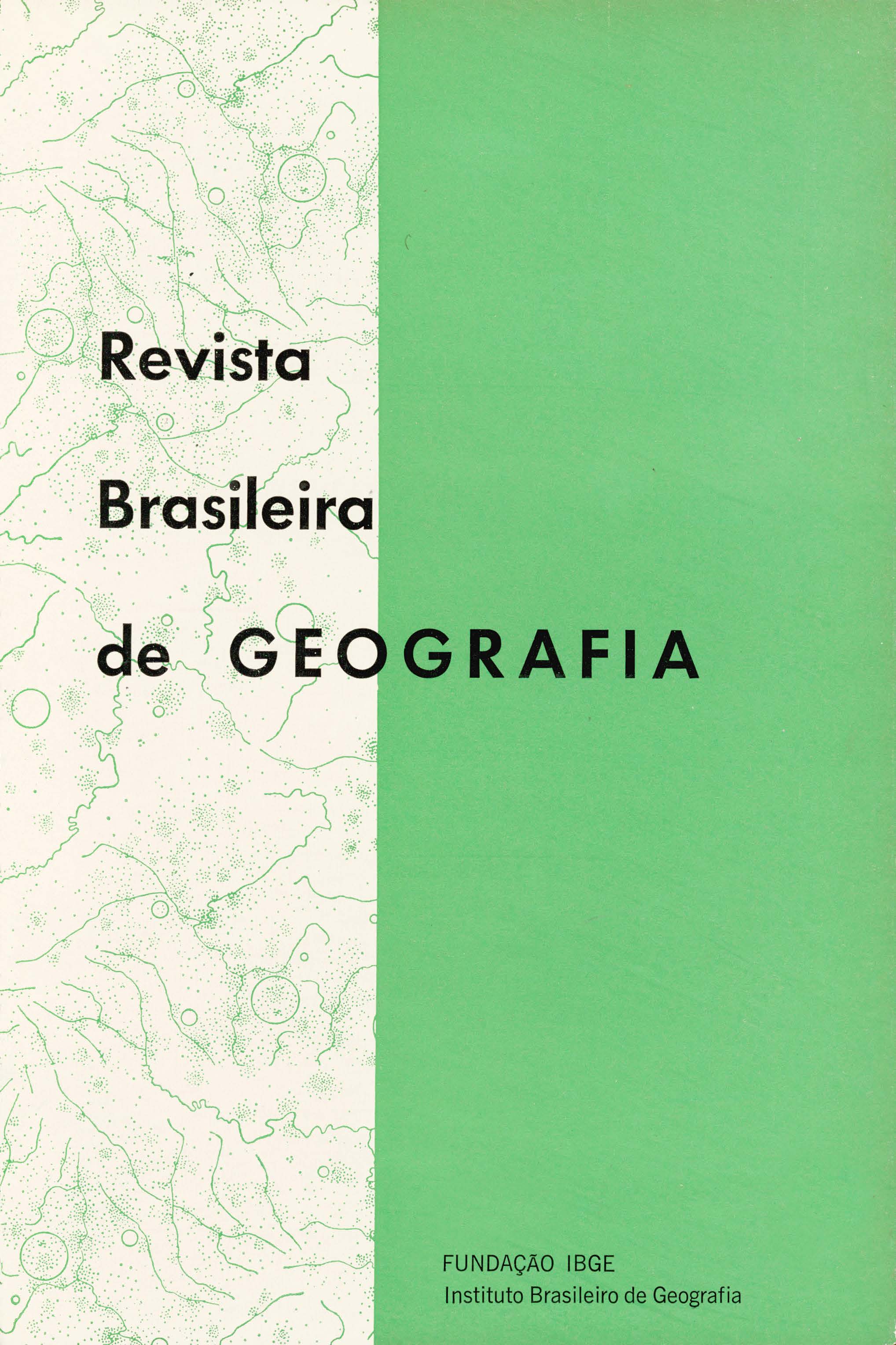Tipos de agricultura no Paraná : uma análise fatorial
Keywords:
Paraná, Geografia quantitativa, Agricultura, Geografia agrícola, Análise fatorialAbstract
This study was for the purpose of applying the "Factor Analysis" and the "Cluster Analysis" in classifying the forms of agriculture in the southern half of the State of Paraná. The choice of criteria and indexes representative of the internal characteristics of the agriculture, was made based on the indications of the Committee on Typology of Farming of the International Geographic Union.
Following these prescriptions, the type of agriculture, supreme notion which combines all the important attributes of a given forms of agriculture, should be determined on the basis of three principal groups of characteristics:
1) Social, that is relative to the producer; 2) Technical and systematical, namely relative to the methods by which the production is obtained; 3) of productivity, that is relative to the economic aspects.
In the social characteristics, 18 variables were formed into a group, covering the nature of the property of the land, the method of farming, the category of the labor force and the dimensional classification of the farms.
The characteristics of the organization of the farm land combined 18 variables referring to the utilization of the land, tillage and stock breeding.
The technical standard characteristics are covered by 10 variables referring to the force employed in the farm work, the number of tractors and plows and the intensity of the farming estimated through the inputs of labor.
Finally the productivity characteristics of 18 variables referred to the productivity of the land, of the labor and the determinants guiding the farm production.
The factor analysis covered 108 municipalities for a total of 65 variables. 18 basic dimensions resulted therefrom but only 10 were retained to characterize the types of agriculture, namely those of greatest significance and comprising 60% of the total variation. Factor 1 was defined as of a large establishment, under direct farming and private ownership, with significant employment of temporary workers, with the principal land used as natural pasture. The municipalities enjoying a high positive score in Factor 1 are located in open country areas of the second and third plateaus (field lands of Ponta Grossa, Castro, and Guarapuava) where the principal economic activity of the big ranches consists in very extensive cattle raising.
In this same factor the negatively co-related variables characterize an opposite type of agrarian organization, namely: small and medium-size establishments, the planting of corn and beans and large areas covered by trees and bush. The municipalities with a high negative score in Factor 1 are located in the recent colonization areas of the South-West, peopled by settlers descending from the Germans and the Italians, originating from Rio Grande do Sul and Santa Catarina.
Factor 2 represents another form of agrarian organization: with a high positive correlation, are the variables of use of the land in artificial pastures and permanent ti llages, large area of trees and bush and predominant use of human labor in the work on the farms. The highest positive scores show up on the coastal zone, in Alto Ribeira and in the Foz do Iguaçu area. A high negative correlation appears in this factor against the variables of wheat growing, the employment of plows and the use of animal traction in the agrarian work. Such an organization is characteristic of the areas of colonization of the Slavs on the second plateau.
Factor 3 is pertinent to cattle raising: Positive correlation in regard to cattle and negative in regard to pigs. The Factors that combine the variables relative to temporary cultivation are: Factor 4 (cassava), Factor 11 (beans), Factor 12 (rice), Factor 13 (corn) and Factor 14 (potatoes) . The municipalities with highest scores in these factors are those that are topmost in these plantings.
Factor 5 is a dimension that represents perfected cattle breeding and Factor 6 is the dimension o f mechanized agriculture.
The remaining factors connect but a small part of the total variation and are not important for characterizing the types of agriculture.
The combination of the 18 basic dimensions in a system of categories which envelop all the characteristics indicated is done by means of a Cluster Analysis. The distance between the municipalities in the space occupied by the 18 dimensions is measured and, in progressive stages, the municipalities are divided into groups. The grouping process shows that the municipality of Curitiba is the last to have joined the system and resembles none other. Generally speaking, the municipalities that make up the metropolitan area are widely different and, specialized in certain farming activities, group together two by two.
In the congregation of the system, two large groups stand out for their high degree of generalization: one which musters the municipalities of earlier occupancy, of Portuguese-Brazilian colonization, as well as of the Slavs, and which is located in the eastern half of the State and the other, in the west, which covers areas of more recent occupancy and where pioneer frontiers exist furthermore. Generally speaking, this second group corresponds to the colonial occupancy usages of the "gauchos".
Going into more detail, however, one can determine 19 different types of agriculture, characterized by the factors which obtain the highest positive scores or the lowest negative scores, whichever be the case.
The municipalities that go in to each type of agriculture are indicated in Fig. 11 and the text explains, in full detail, the characteristics of each type.






